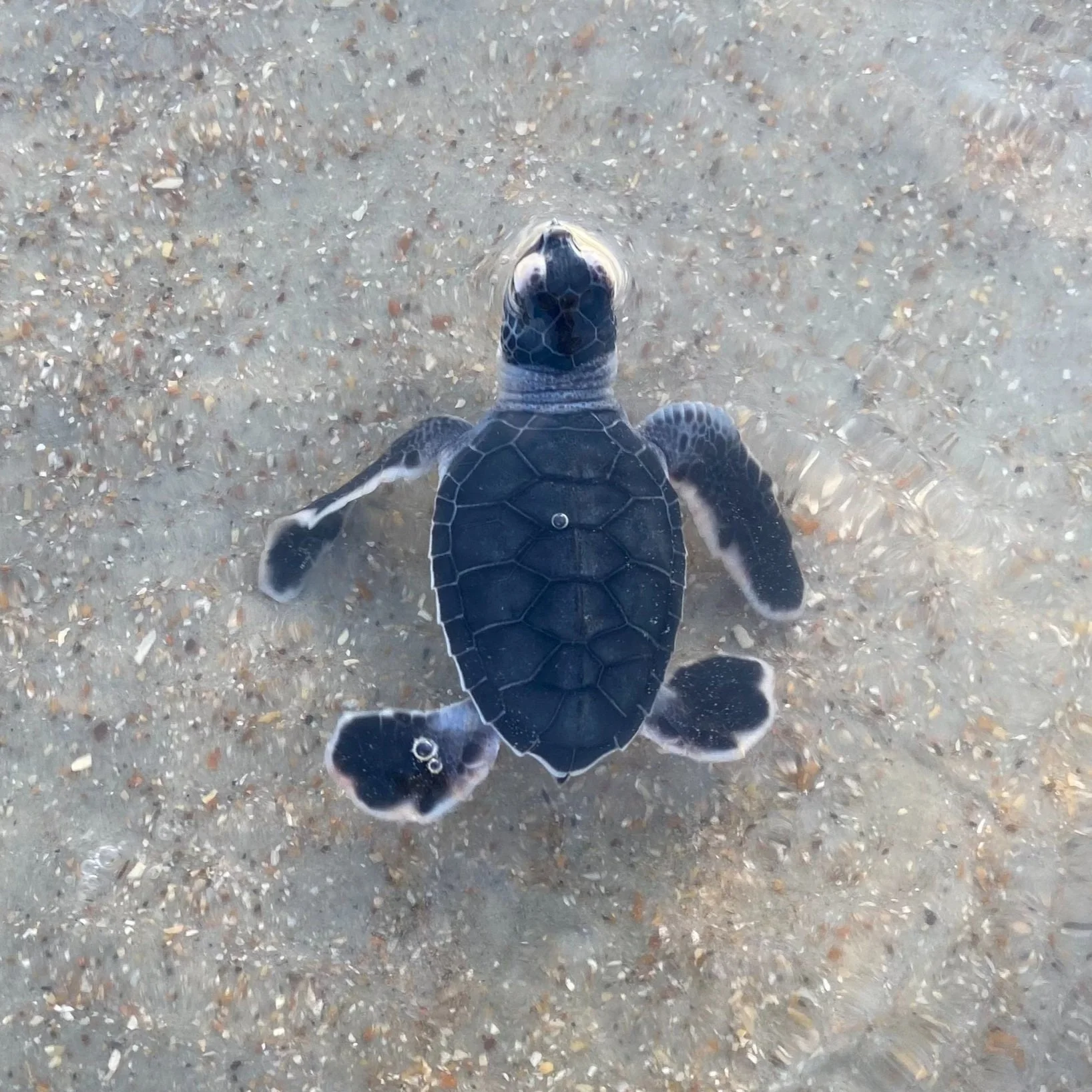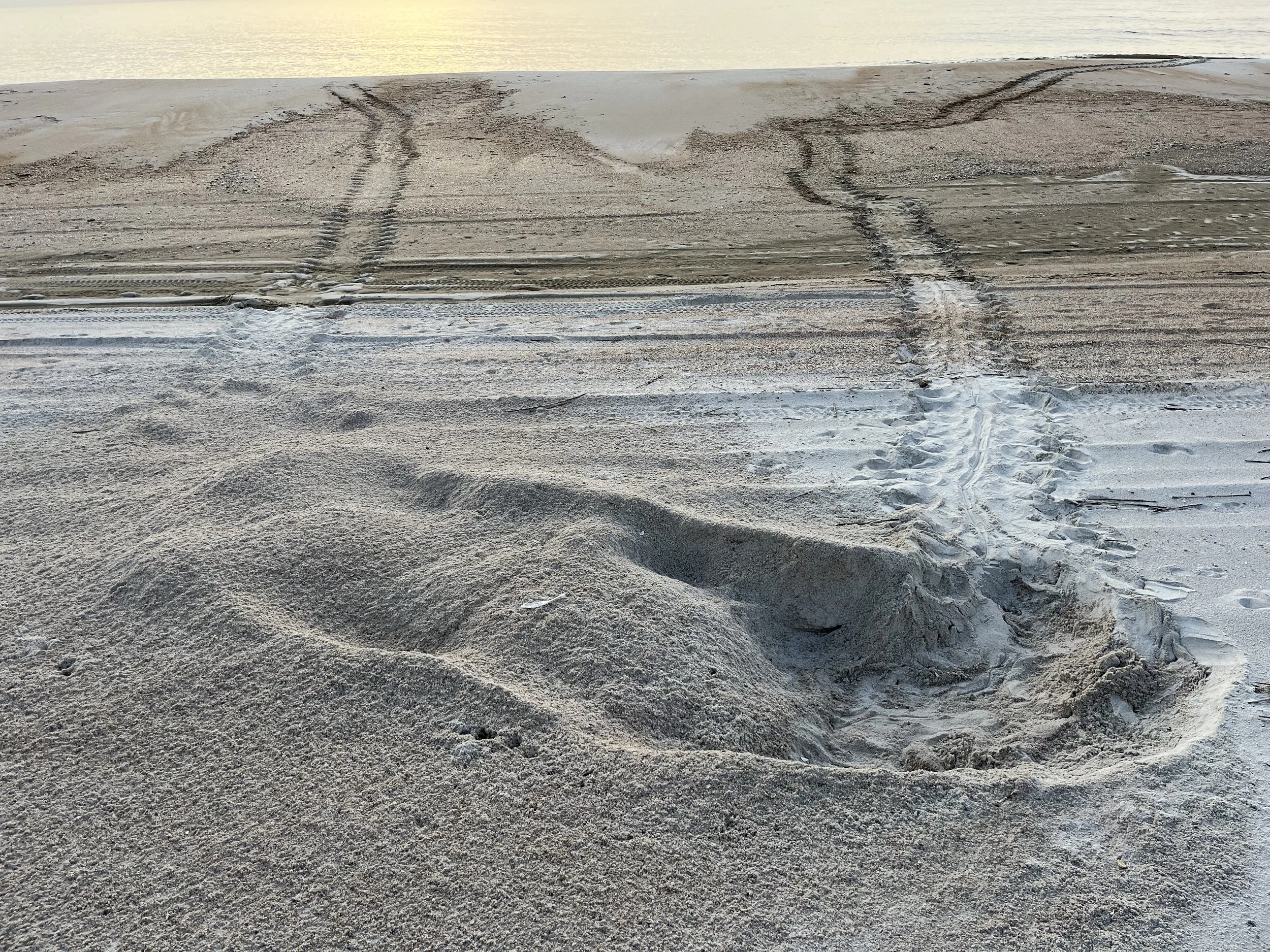
Green Sea Turtle
Chelonia mydas
Common Name: Green sea turtle – named for the green color of the fat under its shell. (In some areas, the Pacific green turtle is also called the black sea turtle.)
Scientific Name: Chelonia mydas
Description: They are easily distinguished from other sea turtles because they have a single pair of prefrontal scales (scales in front of its eyes), rather than two pairs as found on other sea turtles. Head is small and blunt with a serrated jaw. Carapace is bony without ridges and has large, non-overlapping, scutes (scales) present with only 4 lateral scutes. Body is nearly oval and is more depressed (flattened) compared to Pacific green turtles. All flippers have 1 visible claw. The carapace color varies from pale to very dark green and plain to very brilliant yellow, brown and green tones with radiating stripes. The plastron varies from white, dirty white or yellowish in the Atlantic populations to dark grey-bluish-green in the Pacific populations. Hatchlings are dark-brown or nearly black with a white underneath and white flipper margins.
For comparison, the Pacific green turtle (aka Black Sea Turtle) has a body that is strongly elevated or vaulted and looks less round in a frontal view than other green sea turtles. The color is where you see the biggest difference with Pacific greens having a dark grey to black carapace and the hatchlings are a dark-brown or black with narrow white border with white underneath.
Size: Adults are 3 to 4 feet in carapace length (83 – 114 cm). The green turtle is the largest of the Cheloniidae family. The largest green turtle ever found was 5 feet (152 cm) in length and 871 pounds (395 kg).
Weight: Adults weigh between 240 and 420 pounds (110 – 190 kg).
Diet: Changes significantly during its life. When less than 8 to 10 inches in length eat worms, young crustaceans, aquatic insects, grasses and algae. Once green turtles reach 8 to 10 inches in length, they mostly eat sea grass and algae, the only sea turtle that is strictly herbivorous as an adult. Their jaws are finely serrated which aids them in tearing vegetation.
Habitat: Mainly stay near the coastline and around islands and live in bays and protected shores, especially in areas with seagrass beds. Rarely are they observed in the open ocean.
Nesting: Green turtles nest at intervals of about every 2 years, with wide year-to-year fluctuations in numbers of nesting females. Nests between 3 to 5 times per season. Lays an average of 115 eggs in each nest, with the eggs incubating for about 60 days.
Range: Found in all temperate and tropical waters throughout the world.
Status: U.S. - Downlisted as Threatened (likely to become endangered, in danger of extinction, within the foreseeable future) under the U.S. Federal Endangered Species Act in April 2016. Originally listed as Endangered in 1978. International – Listed as Endangered (facing a very high risk of extinction in the wild in the near future) by the International Union for Conservation of Nature and Natural Resources in 1982.
Threats to Survival: The greatest threat is from the commercial harvest for eggs and food. Other green turtle parts are used for leather and small turtles are sometimes stuffed for curios. Incidental catch in commercial shrimp trawling is an increasing source of mortality.
A Green sea turtle hatchling.
A Green sea turtle hatchling from a nest evaluation.
A Green sea turtle nest.




